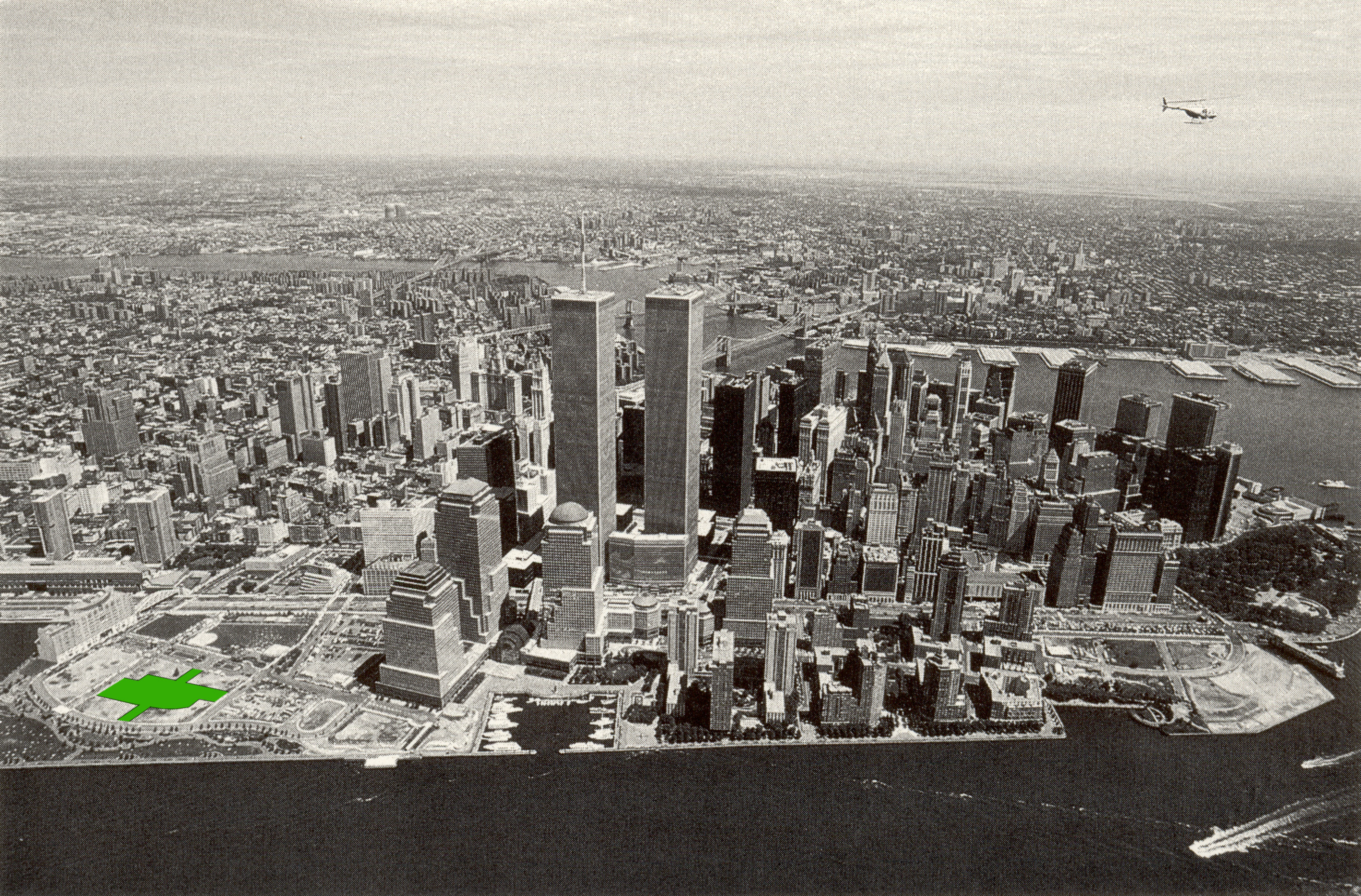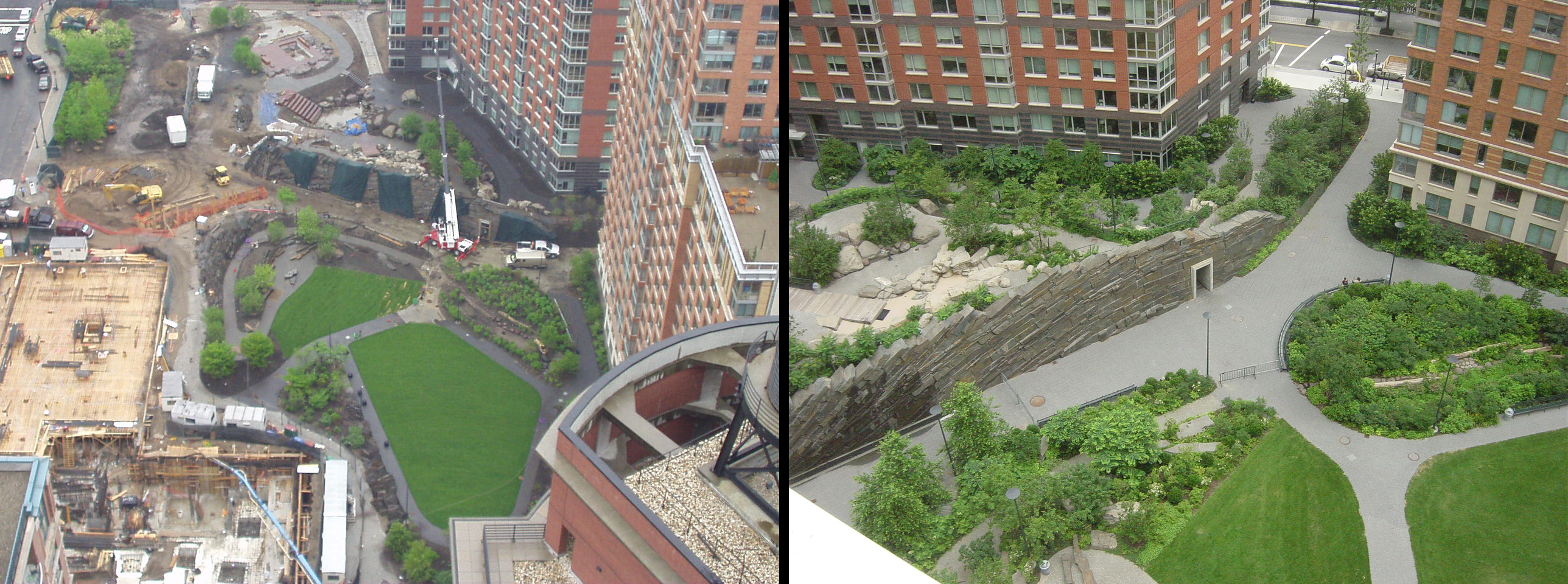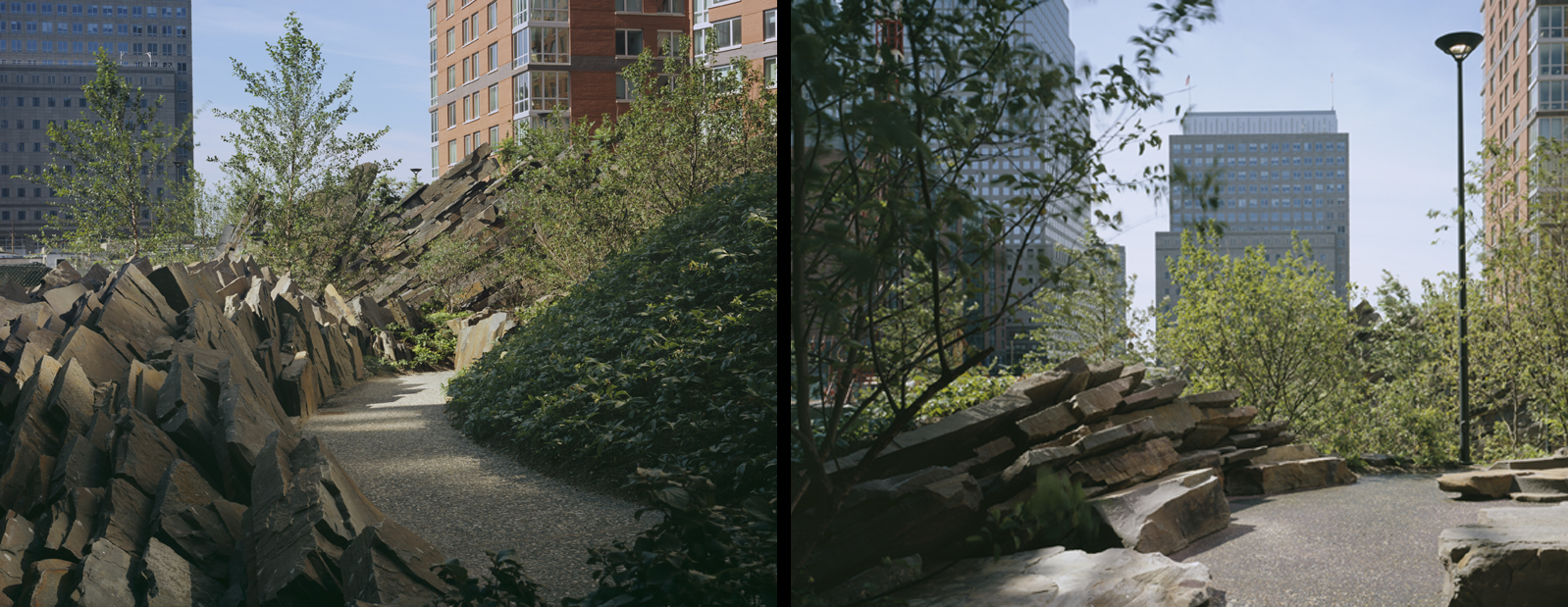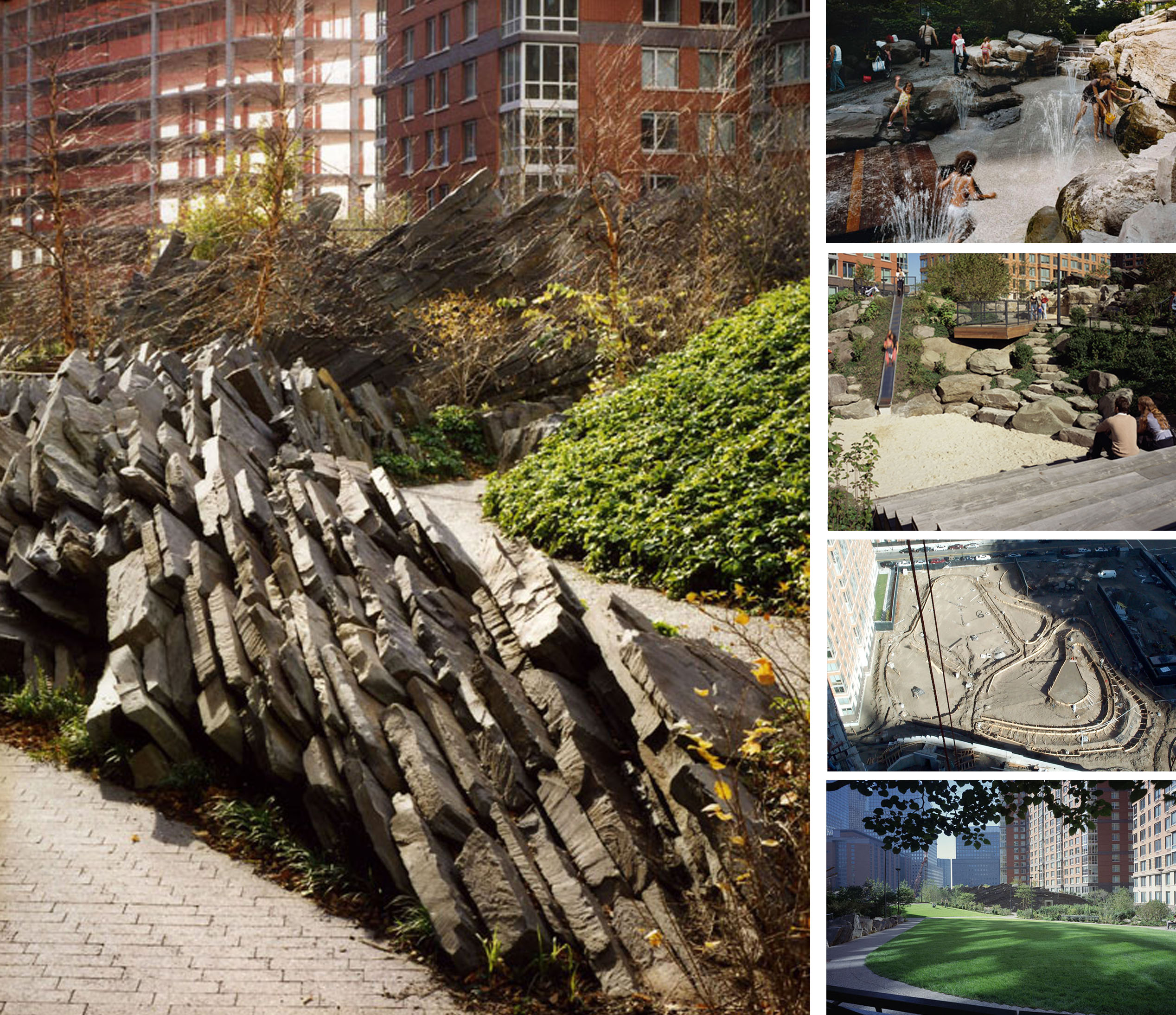.jpg)
.jpg)

.jpg)






“Nothing, not even the wind that blows is so unstable as the level crust of the earth.” —Charles Darwin
The art at Teardrop Park (1999-2004) lies imbedded within the physical and visual structure of rock, water, earth and plant. Three bluestone sections evoke a sense of geologic flux and transition between present time (now) and past time (then). While recalling a natural history of the Hudson River Valley, these sections might also recall the processes of quarrying, or of masonry. But this stonework neither comes from nor quite belongs to any of those things. And because it was never any other built thing, the stonework is not a ruin.
Lift, thrust, fold, fault, drop, scrape, erode—our rendering of geologic incident at Teardrop Park is not anti-form, but is also not yet, or not quite form. It is a becoming of, or coming to, form that makes real our relation to landscape as well as our relation to art.

Photo credit: Paul Warchol, Elizabeth Felicell, Offices of Michael Van Valkenburgh, Associates, Inc.
Related
· Blum, Andrew. "The Active Edge." Metropolis (March 2000) p. 82-88; 130
· Dunlap, David W. "A Chip Off the Old Park." New York Times (30 September 2004) pp. B1; B8
· Flanagan, Regina. "Working with Artists…" Landscape Architecture (June 2005) pp. 88-97
· Hines, Susan. "Abstract Realism" Landscape Architecture (February 2007)
· Spaeth, Catherine. "Under Construction: Teardrop Park, Battery Park City, New York, NY." Dialogue, The Art, Architecture and Design Journal of the Heartland (September-October 2003) p. 41.
· Van Valkenburgh, Michael. "Faculty Project: Teardrop Park." Harvard Design Magazine (Fall 2000) pp. 92-93